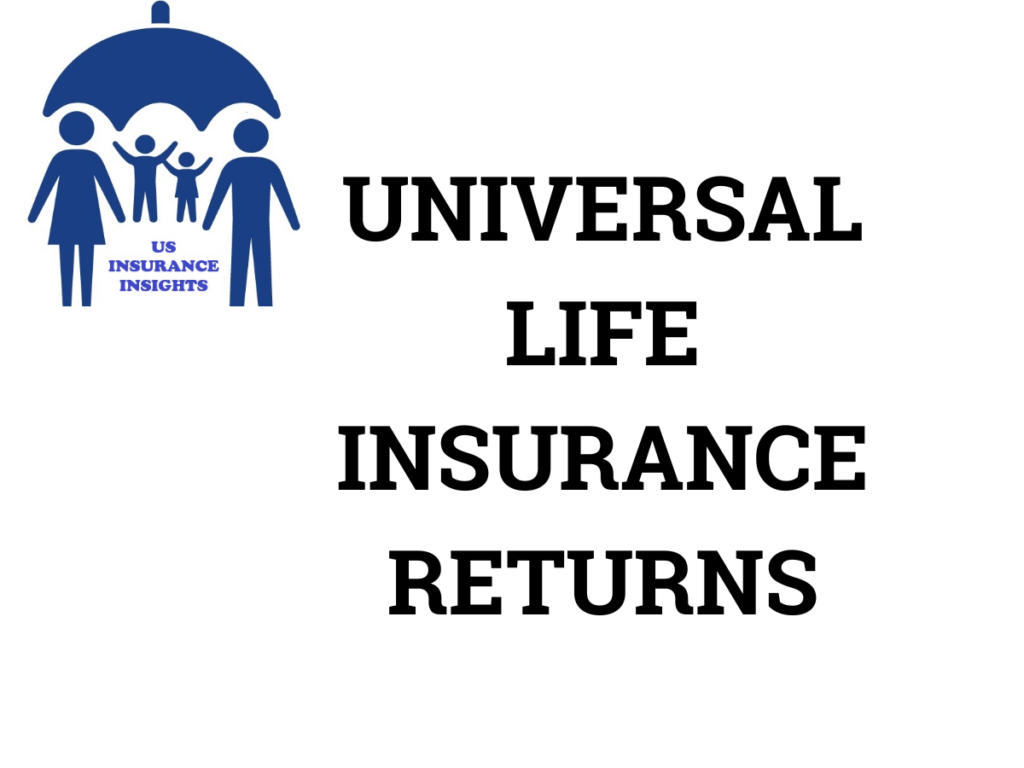Universal life insurance returns? Introduction
When planning your financial future, universal life insurance returns play a crucial role. Unlike normal term life, universal life insurance (ULI) has an additional feature where the cash value builds gradually. So, it’s a good choice for people who want insurance and the ability to invest their money.
But how exactly do universal life insurance returns work? Is the effort significant or not? What can you do to earn more money? Here, you’ll get the details explained clearly so choosing can be easy.
What Are Universal Life Insurance Returns?
Being aware of the Cash Value Component
A major benefit of universal life insurance (ULI) is that it builds up cash value as time goes on. A percentage of each premium payment is used for:
- The cost of insurance (COI) pays for the death benefit and any administration costs.
- Growing your cash value – What you don’t use now is invested and its growth is tax-free.
How Do Universal Life Insurance Returns Work?
Your policy’s cash value gets returns based on how the insurer manages its investments. Depending on what kind of universal life insurance you buy, the way your returns are produced varies.
1. The basic format is known as Traditional Universal Life Insurance.
- Your cash value increases at a rate set and kept the same by the insurance company.
- Many times, a CD yields little risk, but the interest might end up lower than inflation.
2. Another type is Indexed Universal Life Insurance (IUL).
- The cash value is determined by a stock market index, normally the S&P 500.
- Provides a higher potential to earn, but you are secured from major losses because of the cap and floor.
3. Another insurance policy yet is Variable Universal Life (VUL).
- The money you save in cash value is put into subaccounts much like mutual funds.
- Presents higher risk but has the ability to generate high returns compared to alternative ULI types.
- Every option brings some benefits and also risks which is why you should pick the one that suits your needs.
How Much Can You Earn with Universal Life Insurance Returns?
General Industry Average
- Returns from universal life insurance depend on what kind of policy you have and how the market is doing. Here’s how the programming languages are usually grouped:
- Traditional ULI usually pays around 2% to 4% per year, but Indexed ULI can offer up to 7% and Variable ULI may provide up to 10% (with greater risk).
Factors Affecting Universal Life Insurance Returns
- There are many elements that affect how much your cash value increases.
- Indexed or variable policies do not guarantee a set return, since they change with the market.
- Fee: Arranging and running insurance accounts takes time and these fees can lessen your return.
- Contributing extra cash lets your cash value grow more quickly.
- Accessing Loans – Tapping into your cash value through a loan can also stop its growth as your account balance decreases.
- Understanding these factors can help you maximize your universal life insurance returns.
Pros and Cons of Universal Life Insurance Returns
✅ Pros
- Cash value in the policy grows without being taxed.
- ✔ You Can Vary Payments – Set payments that fit your current budget.
- High Returns – Investing in IUL or VUL policies provides chances for market-based returns.
- Get money from the policy whenever you wish, by taking a loan or early withdrawal.
❌ Cons
- ✖ IUL and VUL insurance face risks because their investments are tied to the stock market.
- X Fees & Costs – Whole life insurance costs more in terms of fees.
- ✖ Levels of Complexity – Because growth depends on multiple factors, it is hard to predict returns accurately.
How to Maximize Universal Life Insurance Returns
What can you do to achieve greater returns from your policy? Recommended by experts, follow these ideas:
1. Pick the Right Type of ULI
- If you want to keep risks low, select Traditional ULI.
- You should pick Indexed ULI if you are happy with slow, steady returns.
- If persistent changes in the market do not bother you, go for Variable ULI.
2. Try to Pay Up More Than Just the Minimum
Increasing the amount you pay into your policy gives it more cash value and higher returns.
3. Linked to the growing prices of markets, investments can grow over time.
Pay attention to current market developments if you have Indexed or Variable ULI to make the right investment decisions.
4. Try to avoid taking money out of your account or borrowing by increasing pay.
Frequent cashout claims rob the policy of its cash value and may cause the policy to lapse.
5. Consult with a Financial Advisor.
You can use a professional to enhance your policy so it brings better returns and faces fewer risks.
Why might Universal Life Insurance be a good option for returns?
Not everyone needs universal life insurance returns. The right users are:
- ✔ People Making a Lot of Money – Individuals interested in tax deferral.
- Business Owners – Can use some cash value to support their finances.
- Ideal for those needing estate planning and wealth transfer, they are called Long-Term Planners.
- A term life insurance policy is better suited to those who want the simplest form of coverage.
Common Myths About Universal Life Insurance Returns
Myth 1: “Universal Life Insurance Returns Are Guaranteed”
✅ Real fact: The return you get depends on how the market does and the policy chosen.
A second common myth is that ULI is better than contributing to a 401(k) or IRA.
✅ It is good to have ULI as extra support, but a retirement account should not be replaced by it.
The third myth holds that you can take out money whenever you choose without worrying about consequences.
✓ It is true that withdrawing your money early may result in a reduction in your death benefits and taxes may be triggered.
Final Thoughts: Are Universal Life Insurance Returns Worth It?
If you’re looking for a life insurance policy that also offers investment opportunities, universal life insurance returns can be a great option. But you should learn about the risks, costs and potential for growth before deciding.
With good planning, a ULI can give you solid returns, tax relief and financial security. Look into your insurance choices and choose a plan that will help you grow your wealth!


1 thought on “Universal Life Insurance Returns: Unlocking Smart Wealth Growth”